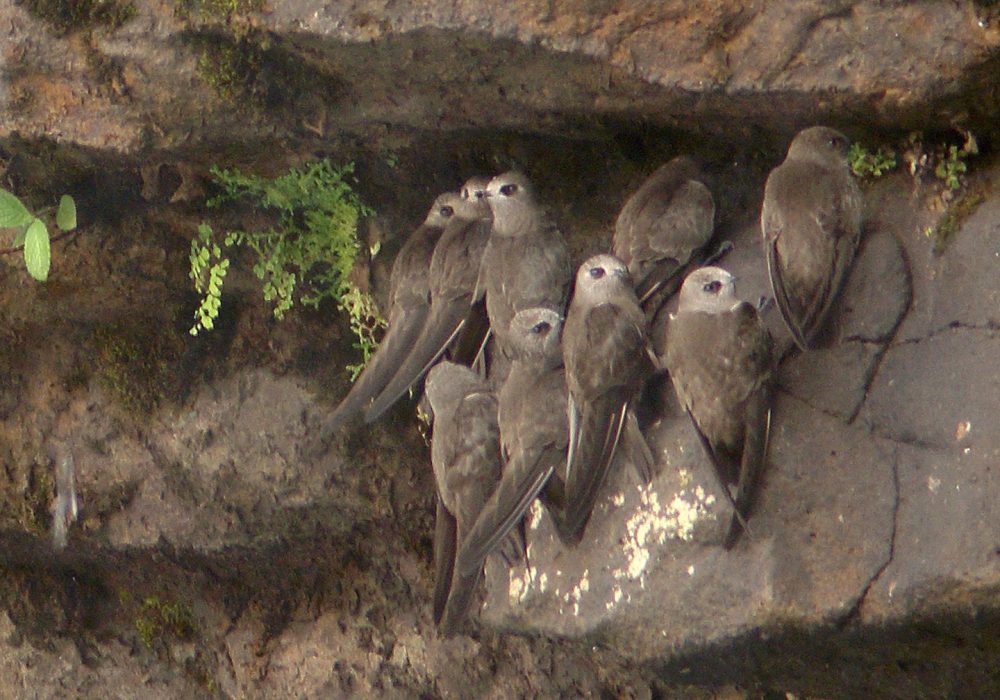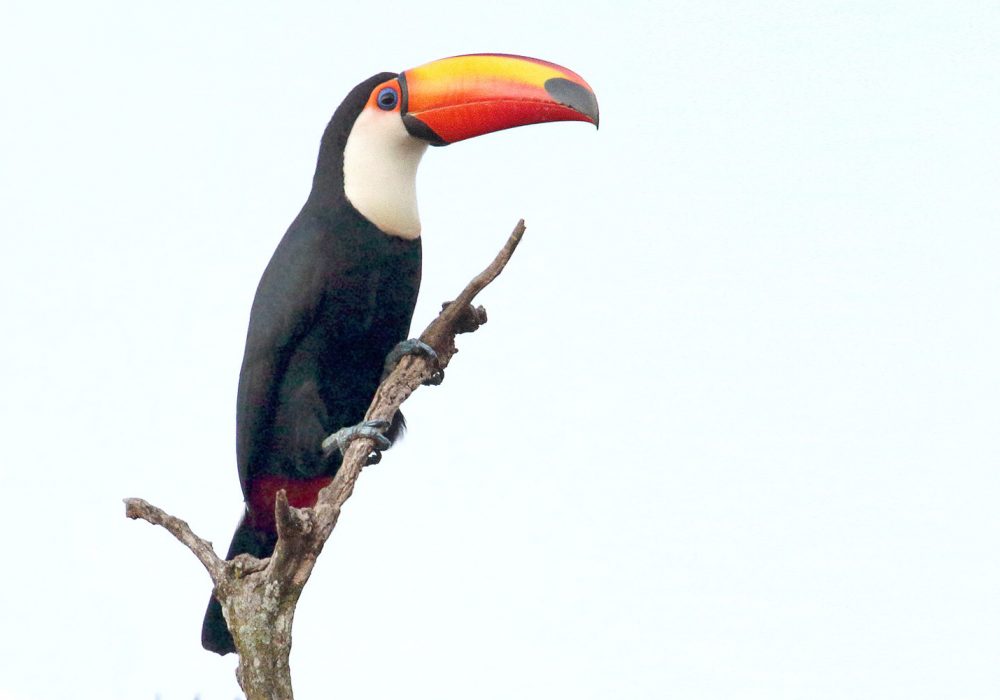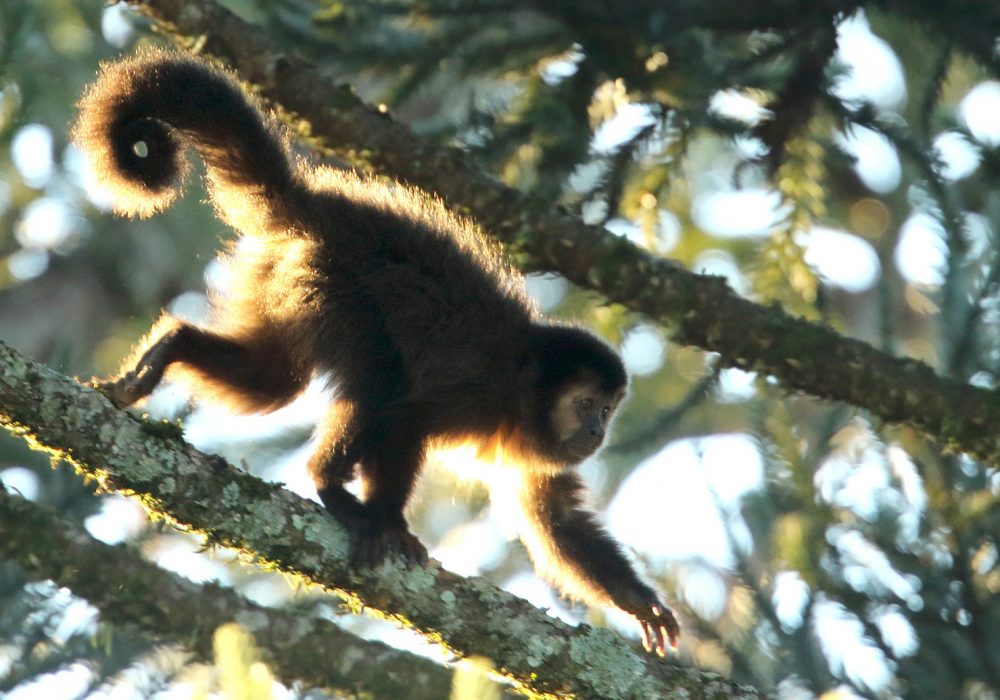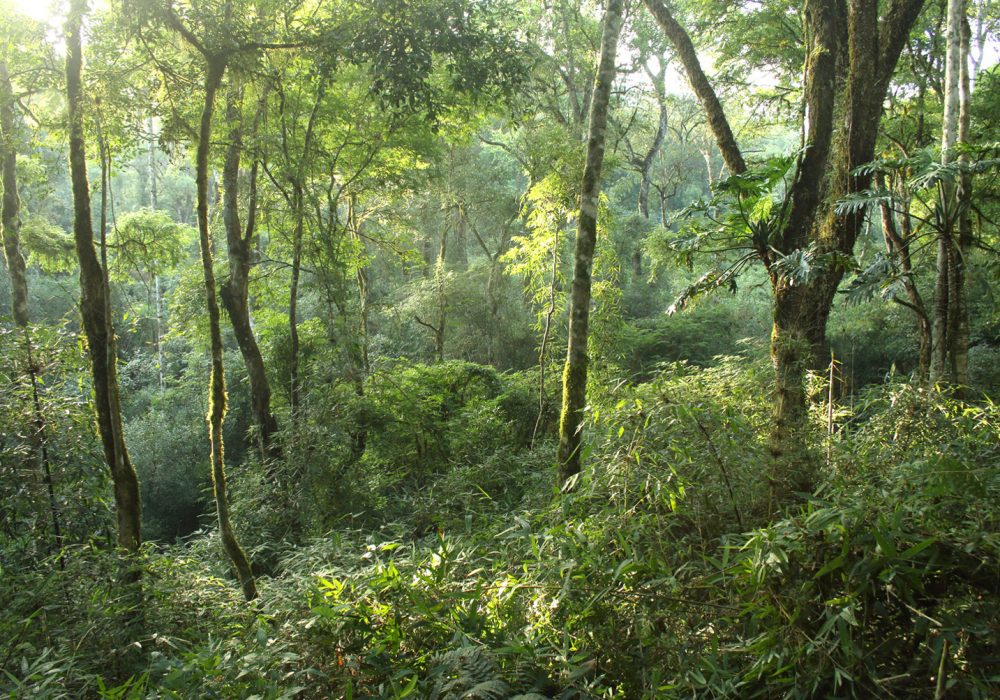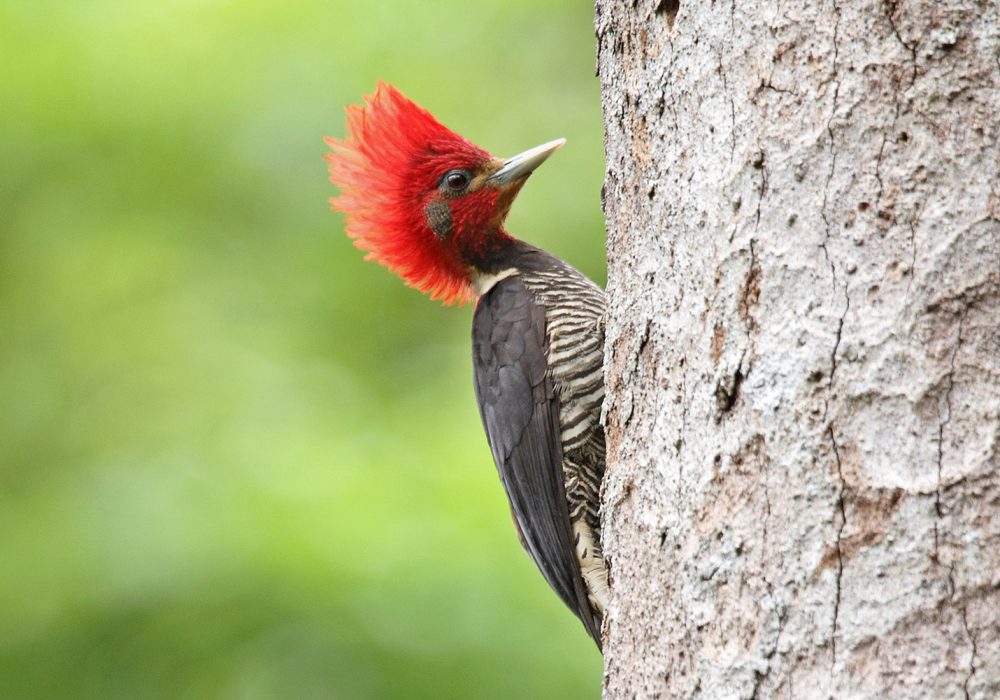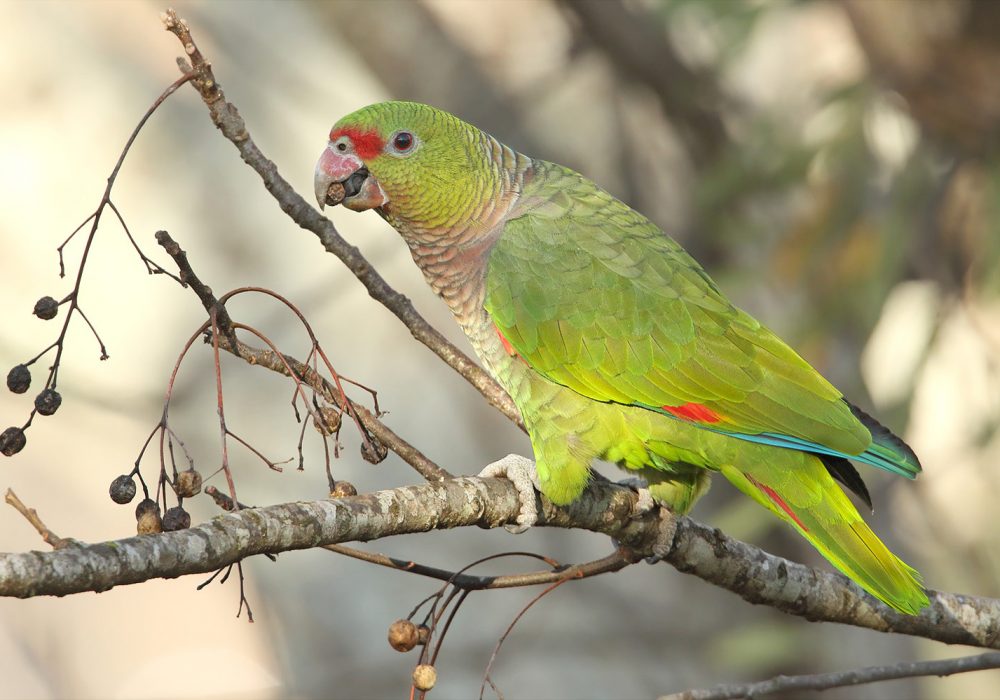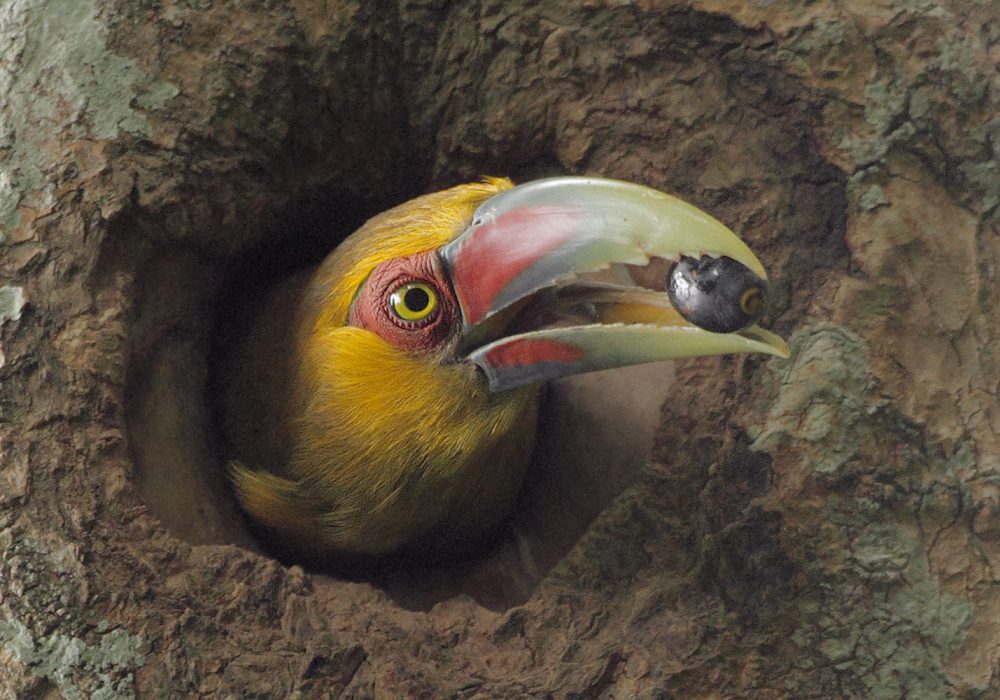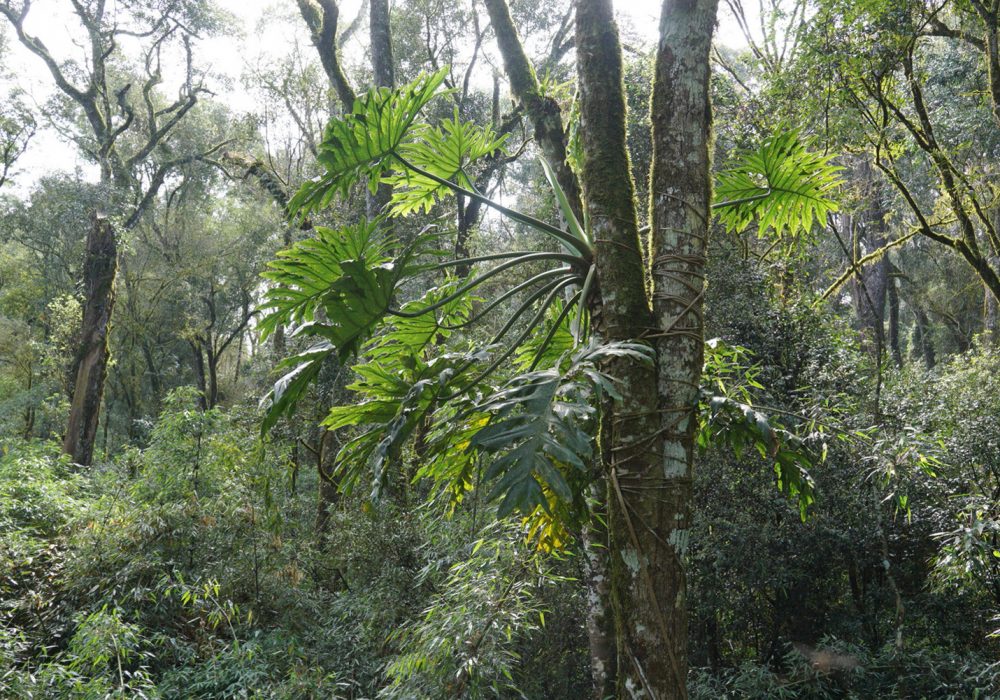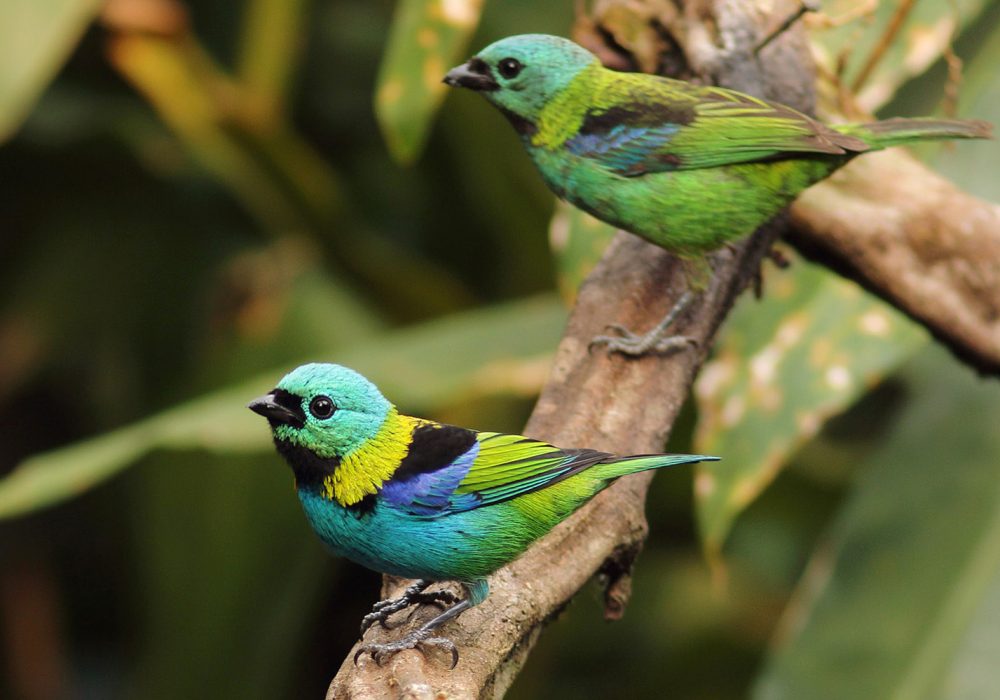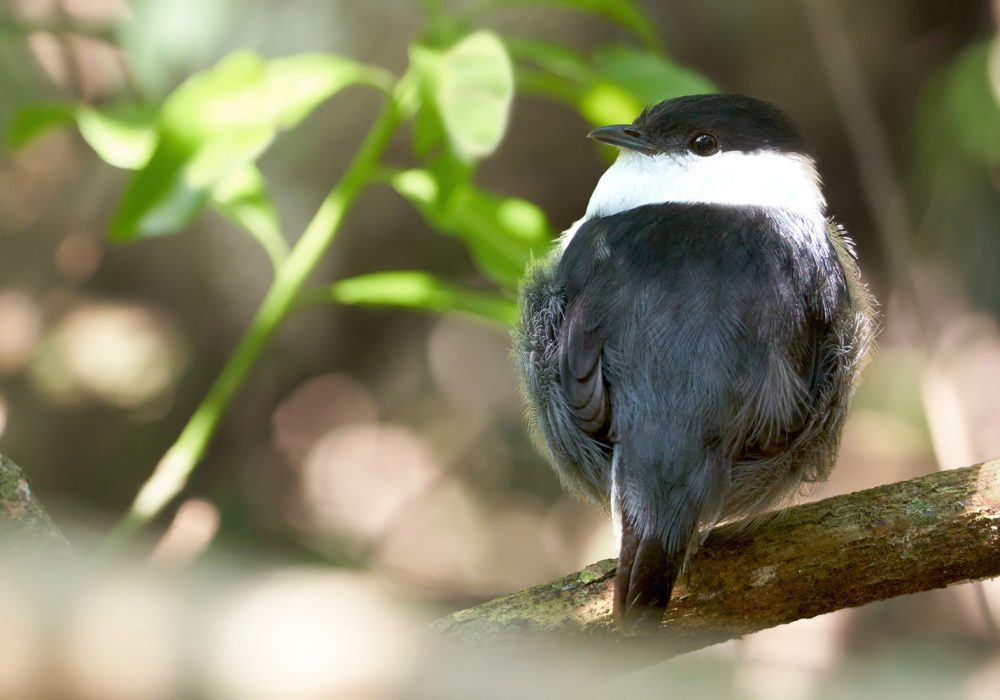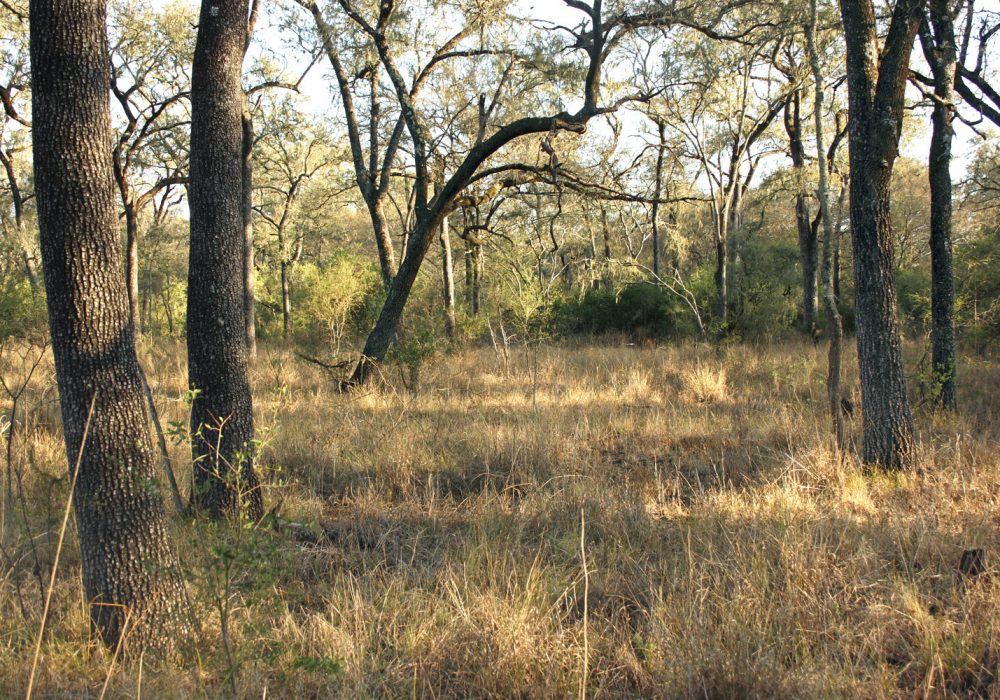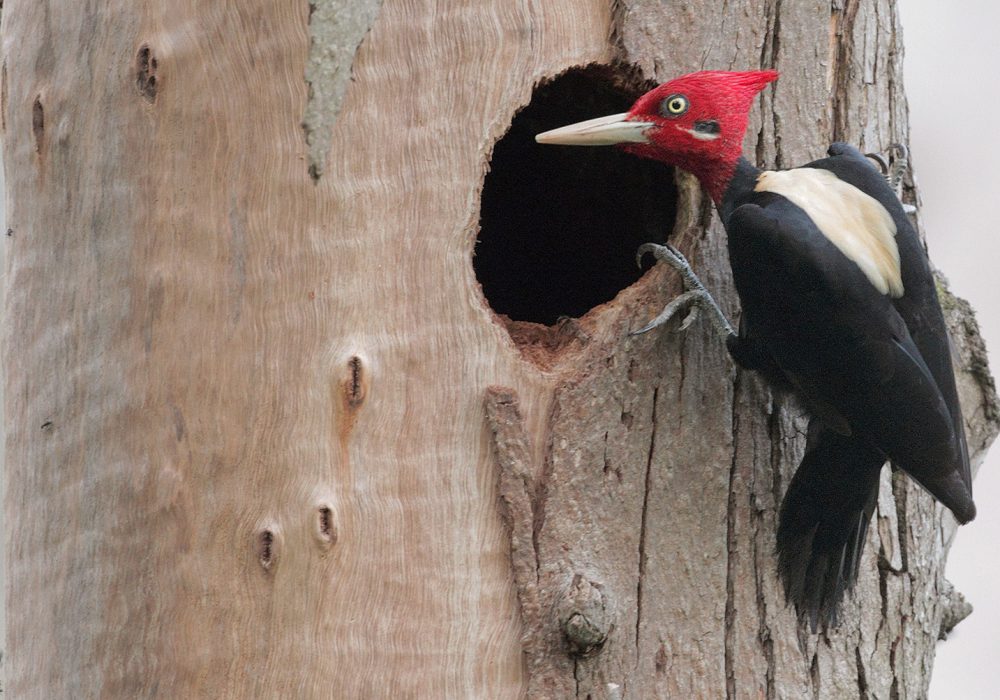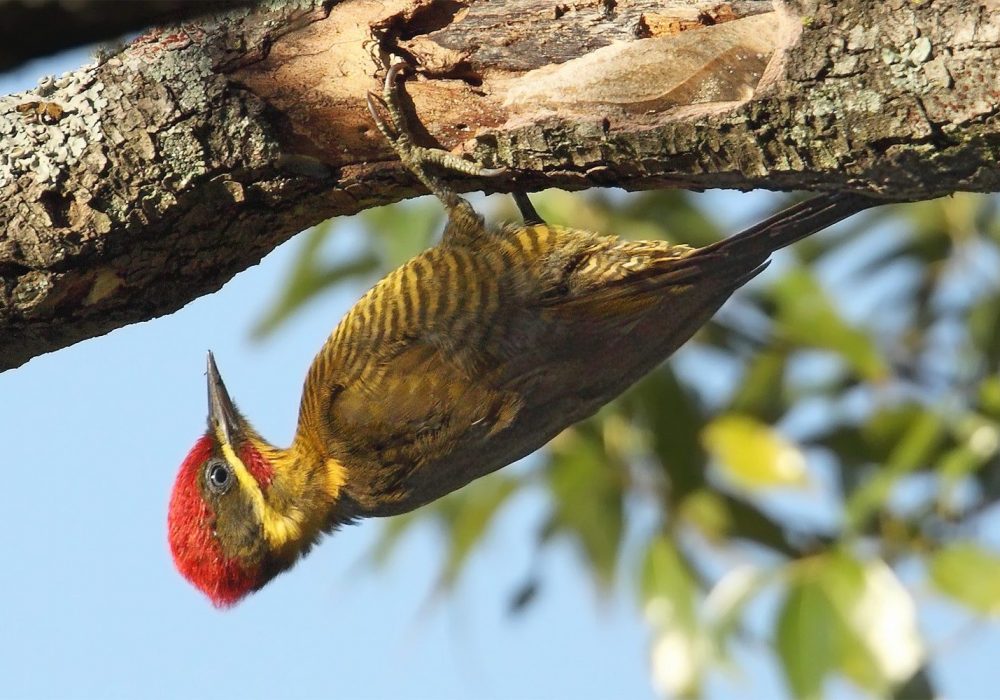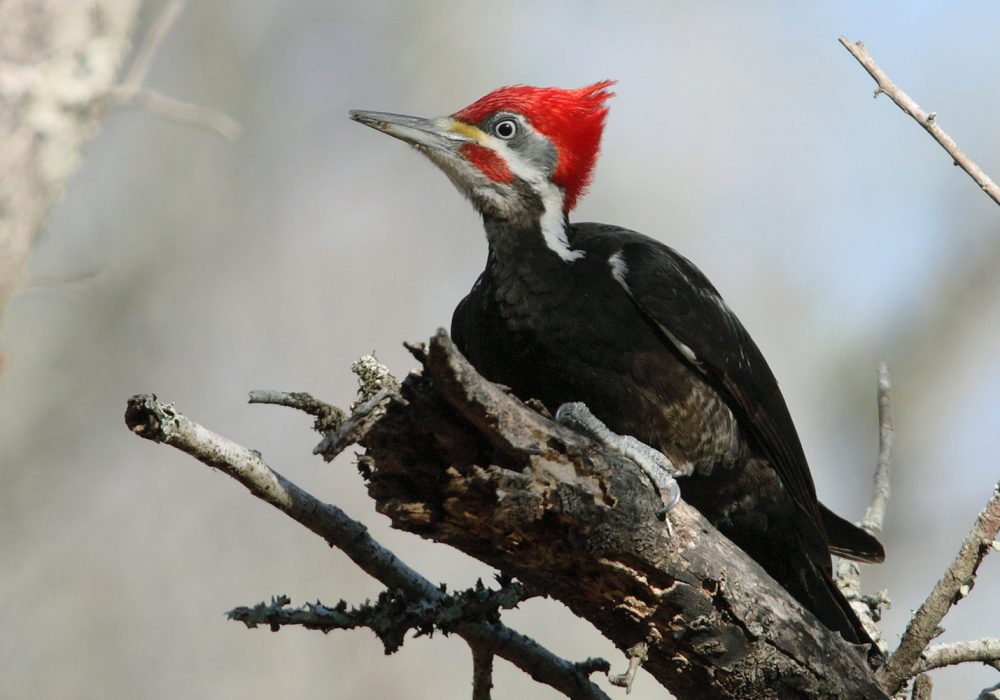In Iguazú and beyond
August is late winter in northeast Argentina and peak pair formation and vocalization season for woodpeckers. Daytime temperatures are generally pleasant, mornings can be chilly with low temperatures, meaning there are few mosquitoes and other insects. This is a good time of year to go birdwatching in Puerto Iguazú and further afield.
Birdwatching options in and near Puerto Iguazú

The Iguazú river waterfront has a strip of riverine forest that can be birded on foot from the streets and hiking paths along it, from Avenida Cordoba in the east, then passing in front of the Panoramic Grand hotel and ending near the Tres Fronteras (Three Borders) marker, a total distance of 2.7 km one way. Besides the woodpecker species (Ochre-collared Piculet Picumnus temminckii, White Woodpecker Melanerpes candidus, Yellow-fronted Woodpecker Melanerpes flavifrons, and Blond-crested Woodpecker Celeus flavescens), other bird species of interest here are Chestnut-eared Aracari (Pteroglossus castanotis), Yellow-chevroned Parakeet (Brotogeris chiriri), Turquoise-fronted Parrot (Amazona aestiva), and Barred Antshrike (Thamnophilus doliatus). In total, 243 bird species have been recorded within the city of Puerto Iguazú, though this includes rarities and summer migrants. Highly recommended is a visit to Jardín de Picaflores (the Hummingbird Garden), a private residence with a garden where over 30 sugar water bottles and fruit feeders are maintained, and where many hummingbirds of different species, and frugivore birds including tanagers and euphonias, can be seen and photographed at close range. The garden, which is on Google Maps, is located at Fray Luis Beltrán 150, at 350 m from the Saint George Hotel, and has a small entrance fee. Outside of the city of Puerto Iguazú, a nearby and favoured birding destination is Provincial Road 101, with an unpaved dirt road section of 34 km that crosses Iguazú National Park from west to east through unbroken Atlantic Forest. Birders seek out rarities as Sharpbill (Oxyruncus cristatus), White-beared Antshrike (Biatas nigropectus), Black-capped Foliage-gleaner (Philydor atricapillus) here, or nocturnal species as Long-tailed Potoo (Nyctibius aethereus), Tawny-browed Owl (Pulsatrix koeniswaldiana), Mottled Owl (Strix virgata) and Black-banded Owl (Strix huhula). Regarding woodpeckers, Lineated, Robust, Blond-crested and smaller woodpeckers are frequently seen here, but Helmeted Woodpecker only very rarely. The 101 road can be reached by taxi or rental car from Puerto Iguazú, and the unpaved forest road section starts at 18 km from the city center. At 1.4 km, 30.9 km and 33.1 km along the unpaved road there are bird observation platforms maintained by Aves Argentinas (BirdLife Argentina). There are no foot trails starting off the 101 road, this is primarily a car-birding destination. For birding on foot in northern Misiones, options include revisiting the trails at Urugua-í Provincial Park from the 13 August day excursion, and birding lodges (see below) have trails as well, as do the Iguazú Falls.
Visiting the Iguazú falls
A visit to the Iguazú Falls is not included in the conference schedule, and first time visitors to Misiones are recommended to plan one or two days before or after the conference to visit the Falls independently. The falls, among the most spectacular in the world, have extensive trail networks and boardwalks. If exploring the trails slowly and while birding, two full days can be spent here to see it all. The symbol of Iguazú National Park is the Great Dusky Swift (Cypseloides senex) which breeds with thousands of individuals on cliffs behind the multiple waterfalls. The swifts can be seen up close perched on the cliffs at the base of the Dos Hermanos Falls on the Paseo Inferior (Lower Circuit) trail, while flocks of hundreds can be seen diving into the largest fall of Garganta de Diablo (Devil´s Throat). Another iconic bird at the falls is Toco Toucan (Ramphastos toco). The falls can be reached with a frequent, 35-minute bus connection from the bus terminal in Puerto Iguazú. The falls open at 8:00 in the morning; early arriving birders will find the bushes and woodlots at the park entrance parking lots worthwhile. The entrance fee to the Falls for international visitors is the equivalent of 35 USD on the first day. If you validate your ticket at the ticket windows when leaving, there is a 50% discount on your second visit the next day.
Birdwatching elsewhere in Misiones province
Whereas Blond-crested Woodpecker is most common near Puerto Iguazú and at PP Urugua-í, most other woodpeckers are more abundant in the central part of Misiones province. The forested region in the highlands around San Pedro, Misiones, at 200 km from Puerto Iguazú, has good numbers of Lineated Woodpecker and Robust Woodpecker, and the best densities of the threatened Helmeted Woodpecker, though this remains a scarce and difficult to see woodpecker. Another scarce woodpecker that can be found here, but not near Puerto Iguazú, is the Yellow-browed (or White-browed) Woodpecker (Piculus aurulentus). The best site to look for Helmeted Woodpecker is the 3 km Curi-y trail through old-growth forest in Cruce Caballero Provincial Park at 25 km from San Pedro, where searchers should be attentive to its loud territorial call, only emitted at first light from 20 minutes before to 20 minutes after sunrise, and at other hours to its soft, relatively slow foraging pecking at mid-height in the forest. Typically, only several days of searching will yield an encounter with this woodpecker. For Yellow-browed Woodpecker, the best sites are Araucaria Provincial Park in San Pedro and Caa Yari Provincial Park in the Yaboty Biosphere Reserve (43 km from San Pedro), which also has Helmeted Woodpecker, but only a short foot trail to search for it. Besides woodpeckers, specialty birds of this region are Saffron Toucanet (Pteroglossus bailloni) and Buff-bellied Puffbird (Notharchus swainsoni) in PP Cruce Cabellero, Vinaceous-breasted Parrot (Amazona vinacea), Araucaria Tit-Spinetail (Leptasthenura setaria) and Canebrake Groundcreeper (Clibanornis dendrocolaptoides) in PP Araucaria, and Thick-billed Saltator (Saltator maxillosus) and Shear-tailed Gray Tyrant (Muscipipra vetula) in PP Caa Yari. These places can be reached with a birdwatching guide which includes transport (see below), or more affordably in a rental car, or low-budget with public transport in long-distance buses (except PP Caa Yari which can be reached by car only). For prices and travel schedules for long distance buses see here. Tent camping with basic amenities is possible at PP Urugua-í, which can be reached easily by long distance bus, and in PP Cruce Cabellero, where the last 4 km need to be hiked or hitchhiked, or transport can be arranged in San Pedro. Recommended places to stay in or near San Pedro are Hotel Ceferino Rodriguez or the cabins of Cabañas Los Suizos or Complejo der Wald which are all searchable in Google Maps, and are all in the 10 – 20 USD per person per night range.
In the south of Misiones, the Atlantic Forest transits into natural grasslands. The newly established Campo San Juan Federal Park holds natural grasslands interspersed with Atlantic Forest woodlots, and with species as Ocellated Crake (Rufirallus schomburgkii), Sickle-winged Nightjar (Eleothreptus anomalus) and Streamer-tailed Tyrant (Gubernetes yetapa). In the same region, Reserva Urutaú has a combination of grasslands and wetlands with a resulting high diversity of birds.
Birding guides
Experienced and recommended birdwatching guides in Misiones are listed below. These guides offer tours in northern Misiones, central Misiones, Corrientes and Chaco.
- Julián Baigorrio, Iguazú Birdwatching
https://www.Iguazúbirdwatching.com/ - Miguel Castelino, Trogon Tours
https://www.trogontours.com/ - Guy Cox, Toucan Birding
https://www.toucanbirding.com/
Birding lodges
Northern Misiones counts with several birding lodges which offer cabins, trail networks, meals and guides. San Sebastian de la Selva is known for maintaining fruit feeders for bird photogaphers that are frequented by Blond-crested Woodpecker and Yellow-fronted Woodpecker, and tanagers. Surucuá Ecolodge is known for having leks of White-beared Manakin (Manacus manacus).
- Surucuá Reserve and Ecolodge
https://surucua.com/en/home-ingles/ - Yacutinga Lodge
https://www.yacutinga.com/en/ - Karadya Birding Lodge and Reserve
https://www.karadya.com.ar/ - San Sebastian de la Selva
https://en.sansebastiandelaselva.com/
Birdwatching in Chaco province
After birding the Atlantic Forest in Misiones, another diverse set of woodpeckers and other birds can be found in Chaco National Park in Chaco Province, a day´s travel from Puerto Iguazú (728 km) or San Pedro (667 km) by car or bus. Here, species such as White-barred Piculet (Picumnus cirratus), White Woodpecker (Melanerpes candidus), White-fronted Woodpecker (Melanerpes cactorum), Checkered Woodpecker (Dryobates mixtus), Little Woodpecker (Dryobates passerinus), Pale-crested Woodpecker (Celeus lugubris), Golden-green Woodpecker (Piculus chrysochloros), Black-bodied Woodpecker (Dryocopus schulzii), Cream-backed Woodpecker (Campephilus leucopogon) and Great Rufous Woodcreeper (Xiphocolaptes major) can be readily found in the open chaco forests. Lodging is available in Capitán Solari near Chaco National Park, and this national park has a free camping ground. Pampa del Indio Provincial Park, 89 km northeast of Chaco National Park, is recommended as well, with observation towers, large trees, trails, and a free basic camping ground. It has the same woodpeckers as PN Chaco, with Black-bodied Woodpecker more readily seen in PP Pampa del Indio.
Southern Argentina
For those considering to include a visit to southern Argentina (some 2800 km from Puerto Iguazú) in their travel plans to see Magellanic Woodpecker (Campephilus magellanicus), be advised that in August the forests where this woodpecker occurs have snow on the ground, and rubber boots and winter gear, or rental of snow shoes, will be needed to look for it. Refugio Neumeyer in Valle del Challhuaco in Nahuel Huapi National Park near San Carlos de Bariloche is a good spot to look for this woodpecker. It usually can be found within one or two days.

